Today, artificial intelligence (AI) and machine learning (ML) are becoming essential for many businesses and domains. And although hospitality hasn’t made extensive use of these technologies so far, Accenture predicts it will be one of the industries to make the most of AI and ML by 2035. Read on to learn how.
The Benefits of AI and ML for the Hospitality Industry
As is the case for many other industries, artificial intelligence and machine learning deliver tremendous benefits to the hospitality industry. Exactly what kind of benefits? Those that are derived from the limitless capabilities of cognitive technologies to mimic how humans think and learn.

- Data-driven decision-making: decisions and choices are made based on relevant, properly processed data; human factors and guesswork are excluded.
- Streamlined processes: as many operations as possible are automated, and manual labor is reduced.
- Well-thought-out use of resources: human, technical resources and facilities are efficiently allocated; no idle time is allowed.
- Optimized costs: finances are intelligently managed.
- Advanced customer experiences: all CX-related processes are based on a deep understanding of each customer’s specifics and requirements.
- High security: smart algorithms detect and warn about malicious behavior.
AI and ML in Hospitality: Best Use Cases
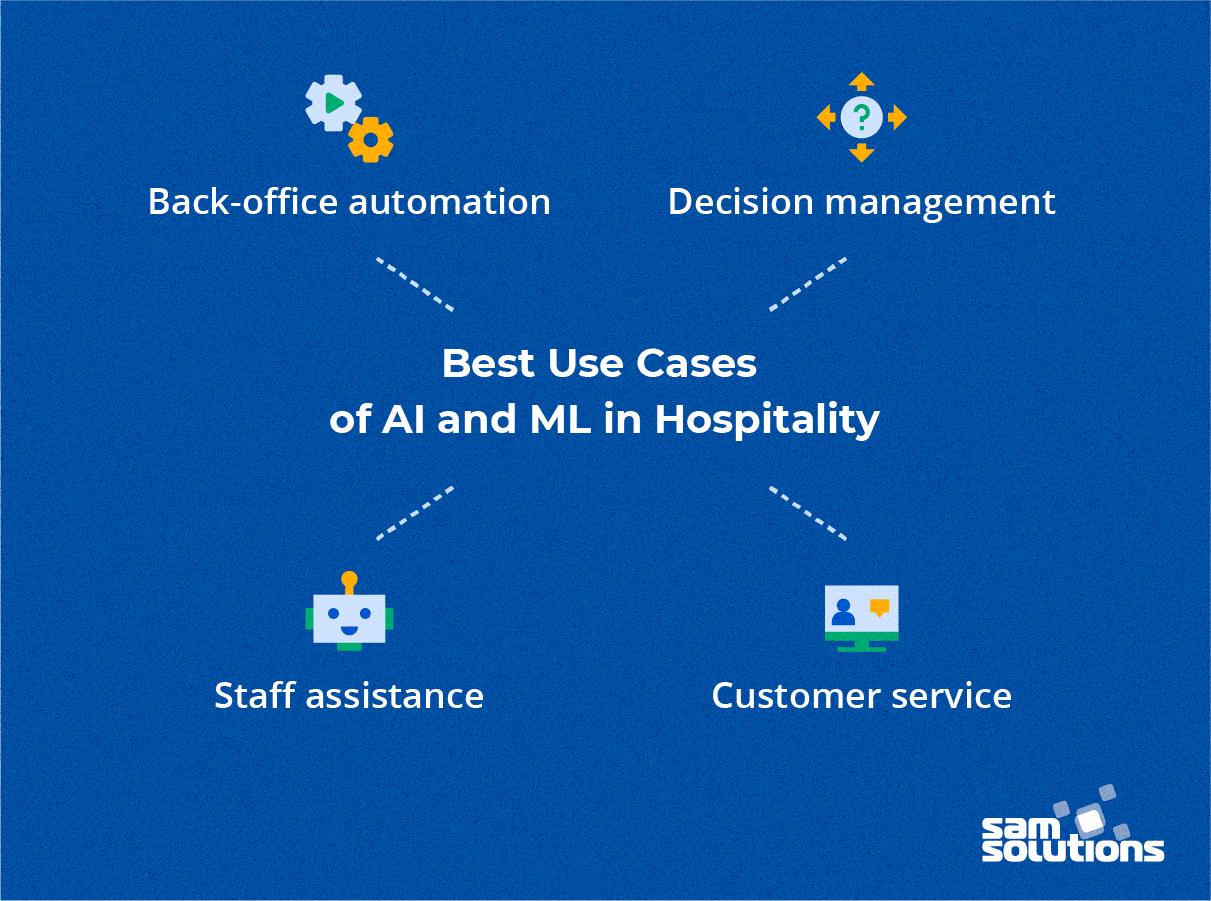
From process streamlining to higher ROI to enhanced security — artificial intelligence and machine learning add incredible value to businesses. Generally, the hospitality industry uses AI and ML for the following purposes:
- Back-office automation (workflow management, pricing automation, etc.)
- Decision management (enterprise decision management, analytics, etc.)
- Staff assistance (robots, service kiosks, predictive maintenance, etc.)
- Customer service (virtual assistants, service kiosks, recommendation engines, computer vision, image recognition, natural language processing, etc.)
Some companies think outside the box and create innovative solutions that go beyond these conventional use cases. And the more comprehensively a company adopts AI and ML capabilities, the more impressive the results.
Let’s get to know some of the most remarkable use cases in the industry. Not all of them are currently used in real-life conditions, but they certainly will be one day, and they will upend the hospitality sector.
Domino’s Pizza’s Driverless Delivery
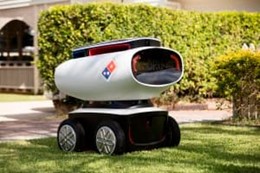
Robotics is at the heart of Domino’s autonomous pizza delivery — DOM. It’s a driverless four-wheeled vehicle that has been created to deliver hot food and cold drinks. It drives along sidewalks, and, guided by a GPS, it can choose optimal routes. Built-in sensors prevent it from stumbling across obstacles.
Miso Robotics’ Frying and Grilling Assistant
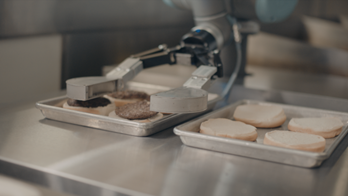
Flippy is a robot, developed by Miso Robotics, which performs dangerous and greasy cooking operations — frying and grilling. The cooking abilities of this hand-shaped robot are on par with that of humans, as it cooks consistently, quickly and with little mess. Although it can be used in many commercial kitchens, it would be particularly efficient in kitchens of large burger-serving facilities and fast-food restaurants. Major reasons for its use are the high speed and neatness of its work.
Crowne Plaza’s Delivery Robot

Dash, a delivery robot at the Crown Plaza Hotel in San Jose, entertains guests and assists personnel by performing many mundane tasks. Looking like a big bowl-shaped container, Dash delivers toiletries and food to hotel guests. The device informs guests about available services and entertainment, which means it also serves as an information booth.
Moley’s Robotic Kitchen
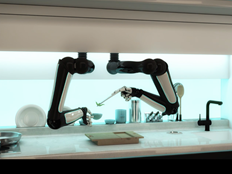
If you hate cooking or are extra busy, then Moley’s robotic kitchen is the toy for you. While Flippy the robotic hand is great for commercial kitchens, Moley was built to cook in private kitchens. Without human interference, it can cook dishes of any complexity and any cuisine. In addition, Moley can make suggestions on ingredients and dishes, and even cleans up after itself.
AI and ML for Self-Service in Catering: sionum.Base
Efficient, productive, autonomous and cutting-edge — these are all characteristics of sionum.Base, a self-service checkout kiosk that SaM Solutions have created together with SBI to make life easier for large catering institutions.
What Is sionum.Base?
Sionum.Base is a smart kiosk that performs the work of a human cashier at cafeterias, canteens and other self-service eateries, and does so in a matter of seconds. It scans the food on the customer’s tray, identifies items and charges the customer’s account.
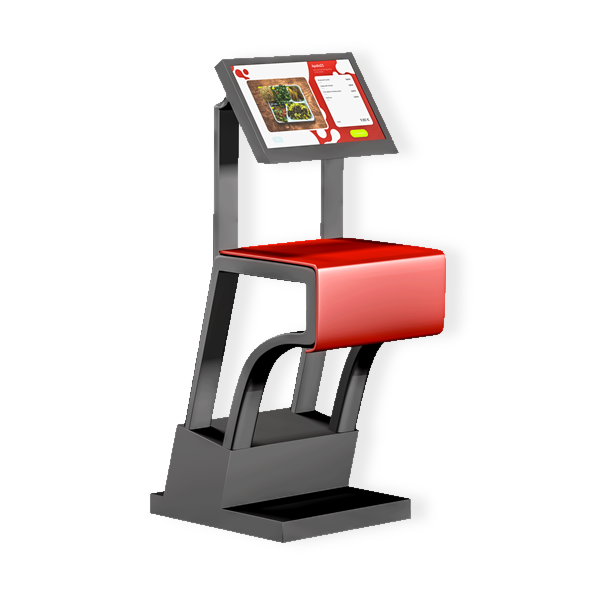
This forward-looking solution has already become the winner of the Gastro Vision award — a unique industry-specific competition that rewards the most innovative developments.
How sionum.Base Benefits Your Business
The ultimate goal of the sionum.Base kiosk is the speedup and streamlining of customer service at overloaded catering facilities. It serves customers at a higher speed than human cashiers can, which allows eateries to expand their capacity.
The advantages of the kiosk are therefore the following:
- Quick operation
- No lines
- The highest possible rate of customers served over a period of time
- Higher profits
- Higher customer satisfaction
Businesses Set to Benefit from sionum.Base
The specifics of sionum.Base and the advantages it provides make it an ideal solution for cafeterias and canteens at companies and institutions such as factories, educational institutions, office buildings, administration buildings, etc.
The bigger the number of customers the eatery serves, the more helpful the kiosk is.
During the global pandemic, sionum.Base kiosks have proven to be extremely helpful at observing health and safety regulations by minimizing contact between customers and personnel.
Key Principles behind Its Operation
The sionum.Base kiosk is a seamless blend of reliable hardware and well-thought-out food-detecting software solution. The process is as follows:
- A customer puts a tray with food and beverages on the device’s platform.
- Powered by image recognition technologies, a built-in scanning mechanism explores and identifies the contents of the tray.
- The system calculates the cost of items on the tray.
- With the help of an RFID microchip, the reader device scans the customer’s ID card and thereby identifies the customer.
- The system charges the customer’s virtual account.
- The customer can then take their meal.
At the heart of sionum.Base lie advanced AI and machine learning algorithms that are based on computer vision technology, which powers accurate recognition and identification of items on customers’ trays.
The machine-learning algorithms quickly train the kiosk to recognize dishes and beverages on the menu. The kiosk runs these short training sessions every day before the eatery opens.
To learn more about how the sionum.Base kiosk works and how your business can benefit from it, get in touch with our experts.
AI and ML on a Platter
Today, AI and ML are the cornerstone of progress in the hospitality industry as they provide immense opportunities for innovation and enhancement. From common chatbots to robots that cook haute cuisine, these smart algorithms offer valuable benefits, such as higher ROI, improved workflow and others.
That is why well-timed implementation of solutions that can boost your productivity and success is so important. Contact our experts to find out how you can improve your business processes and IT landscape with efficient AI- and ML-based solutions.



















 The Latest 15 Information Technology Trends in 2024
The Latest 15 Information Technology Trends in 2024 Top 10 Embedded Software Development Tools
Top 10 Embedded Software Development Tools IaaS vs. PaaS vs. SaaS: What’s the Difference?
IaaS vs. PaaS vs. SaaS: What’s the Difference? 10 Examples of Predictive Analytics
10 Examples of Predictive Analytics







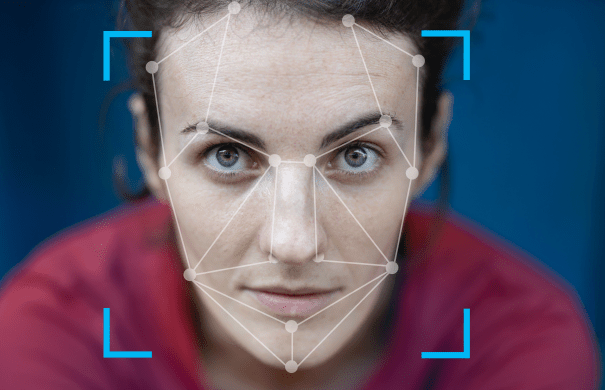




 Web App Development Cost in 2025 [Key Price Factors]
Web App Development Cost in 2025 [Key Price Factors] 13 Best React Development Tools in 2025
13 Best React Development Tools in 2025 Top 10 Mobile App Development Trends 2025
Top 10 Mobile App Development Trends 2025 Top IoT Industry Trends in 2025
Top IoT Industry Trends in 2025 Java Web App Security: Everything You Need to Know
Java Web App Security: Everything You Need to Know
Artificial intelligence used to improve customer service is now a widespread phenomenon. It’s made it so much easier and faster to contact companies, order stuff online, etc.
The capabilities of AI and ML for the hospitality industry are priceless. I’m a huge fan of insight-driven decision-making, because you don’t have to deal with human error or wild guessing.
I’ve always wondered if a day would come that I would finally do away with cooking, and this sounds quite exciting.
I really like the idea around your self-service kiosk. It’s a magic wand for eateries that have to serve huge numbers of people, particularly now during the pandemic.
Thank you for this overview. I had no idea technology like this existed or that it was so great for the hospitality industry.